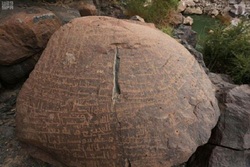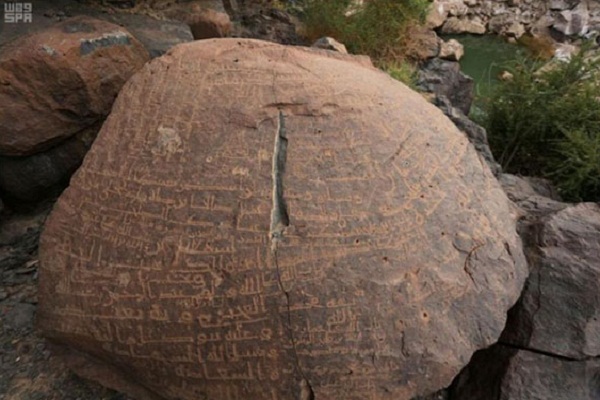Old Quranic Fonts to Be Digitized


The Madani script, in which the Quran, the Sunnah, and the Prophet Muhammad’s (PBUH) correspondence with kings and leader were written, is particularly notable.
There are many opinions concerning the origins of Arabic calligraphy. Some scholars suggest it goes back to Ismail, son of the Prophet Ibrahim (AS). Others say it came from the Nabataeans in the 4th century BC.
Prophet Muhammad (PBUH) urged people in Madinah to learn to write, and so Arabic calligraphy spread there only after his migration. The number of literate people in the Prophet’s era is said to have amounted to about 42 men.
The Madinah area is rich in precious Islamic inscriptions engraved on the rocks of its mountains and valleys, and ancient caravan routes. The history of these inscriptions dates back to the first Hijri century, and they include Quranic verses, supplications, letters, poetry and news.
According to ummid.com, King Fahd Complex for Printing of the Holy Quran in Madinah has recently launched a project to digitally process and implement suggested aesthetic improvements to the font of the Madinah Quran that was printed in 1422 Hijri.
The aim is to produce a high quality font via advanced computer programs that are specifically designed for this purpose and enhance the quality of the decoration to produce a high quality manual font.
On transforming the Madani font into a digital one, digital printing expert Suleiman Bin Abdullah Al-Mayman said the Madani font is the base of all fonts that are common today, noting that the point of the project is to revive this font so the old Quranic font is digitally imitated on computers.
Many international libraries have copies of the Holy Quran written in the Madani script, including the Paris National Library, the Leiden University Library in the Netherlands, the University Library of Birmingham in England, and the Berlin Library.
Idham Mohammed Hanash, the dean of the Faculty of Arts and Islamic Architecture at the World Islamic Science and Education University in Jordan, said the Madani script has become the standard for the origin and originality of Arabic calligraphy.
He pointed out that it is characterized by aesthetic qualities and technical characteristics, and said its great historical importance and technical excellence mean there is a need to restore knowledge of the art of the script.



